When & How to Prune Oak Trees: 10 Expert Tips
-

- Last updated:
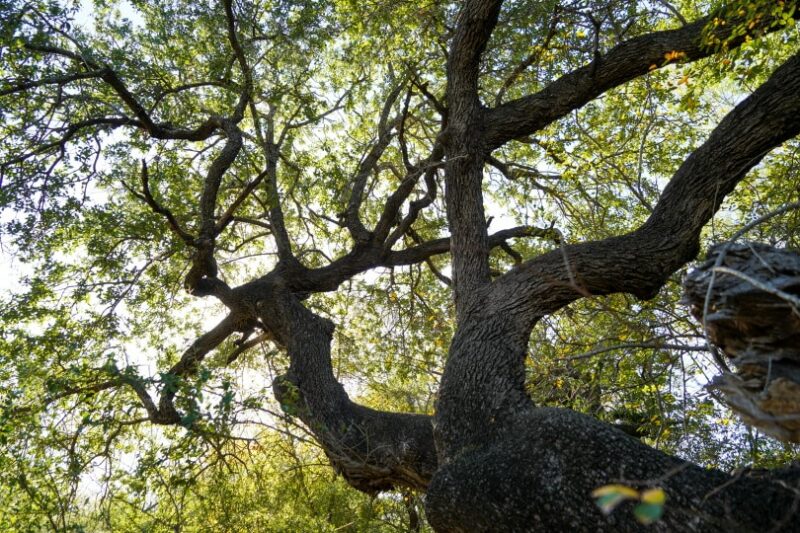
Oak trees are beloved for more than just their beauty. These trees are a staple around the US and are known for their strength, long lives, and great wood properties. The oak trees around your home offer protection from the elements and make others a bit envious of how great your landscape looks. However, if you want your oak trees to continue flourishing, you must know when and how to properly trim them.
Unfortunately, if your oaks aren’t well tended, they can harbor diseases that can make them a danger when it comes to falling limbs, or even growing wildly which can leave your landscape looking disheveled. Let’s learn a few tips on when and how to prune an oak tree so you can properly care for the trees around your home and keep them happy and healthy for many years to come.
The 10 Tips on When and How to Prune Oak Trees
1. Know Your Oaks

A bit of education goes a long way when it comes to caring for oak trees. There are over 400 species of oak found throughout the world. Oak trees do fine on their own most of the time but trimming is needed to help keep them strong and disease-free. You’ll also find that they can’t withstand heavy watering and need the weeds taken care of every so often. Learning how to properly care for your oak trees should be your first task before you take on pruning, watering, or other care practices so you can ensure you’re doing the right thing for your tree.
2. Timing Is Crucial
As with most trees, bushes, and plants in our yards, timing is crucial when properly trimming oak trees. We’ve already mentioned that tree trimming can help fight against the disease. Unfortunately, the time of year when you do the trimming can make your oak more susceptible to bugs and a condition known as oak wilt. To help avoid this problem, oaks should be trimmed during the late winter months, preferably January, February, or early March. Bugs prefer the sap of freshly trimmed oaks. During the colder months, you’ll experience fewer bugs and have a better chance of fending off oak wilt.
3. Gather Your Gear
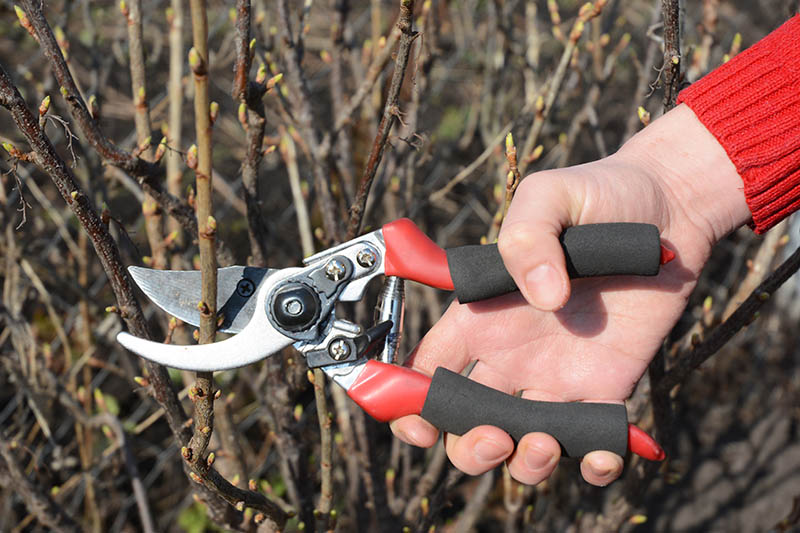
Using the right equipment can make your job easier. It is also better for your trees. According to the size of your oak trees, you may need all or only a few of these items, but here’s a look at common tools and protective equipment used to trim your trees:
- Safety goggles
- Protective gloves
- Hard hat
- Protective clothing
- Pruning shears
- Lopping shears
- Limb Saw
- Pole pruner
- Chainsaw
4. Clean Your Tools
Clean tools are a must when working with oak trees. Cleaning your shears and blades of the saw you choose to use in 9 parts water to 1 part bleach is a great method to incorporate. You can allow your tools to soak for a bit then let them air dry. Make sure they are completely dry, however, before you start work.
5. Choose Your Leader
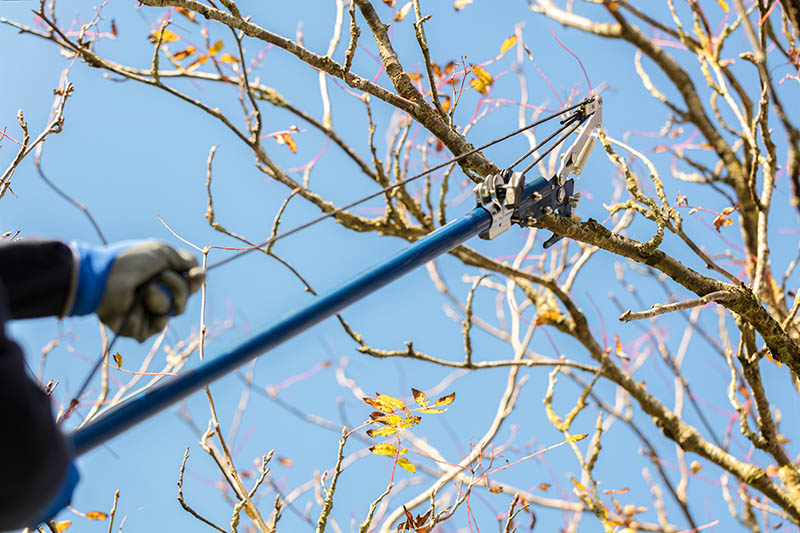
Establishing a dominant leader branch can help keep your oak tree strong. To do this, take a look at your tree and find the largest branches. Some oaks may have two or three branches that are around the same size. This can lead to multiple leader branches and a weaker tree. Pick the branch that looks more centered and vertical to the trunk of your tree to use as the leader. The other branches of similar size should then be trimmed back to allow your leader branch more sun. Your leader branch should be left long to help it become stronger.
6. Locate the Branch Collar
At the base of your tree where the branch meets the trunk, you’ll notice a slightly swollen area. That is the branch collar. Cutting at the branch collar can damage the main trunk and cause growing issues. You want to cut branches on the outside of the branch collar, away from the tree’s trunk.
7. Angles Encourage Your Tree’s Growth
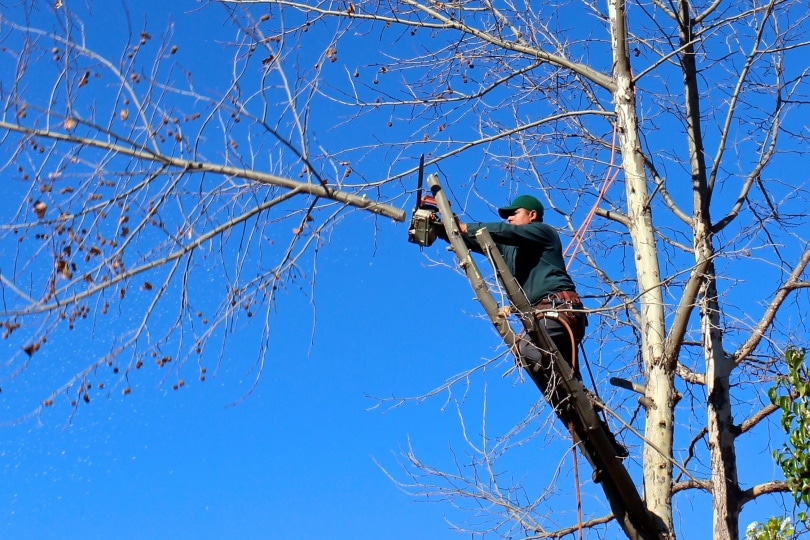
When cutting back large branches to bud or lateral branch length, it is important to cut at an angle. Pruning at an angle promotes growth and will be healthier for your tree.
8. You Want a Full Crown
Trees make their food from the sunlight and need a full crown to do this. When pruning your oak tree, make sure most of the crown stays intact. It’s best not to remove more than 1/3 of the crown of the tree during a winter trimming session.
9. Be Especially Careful with Mature Oaks
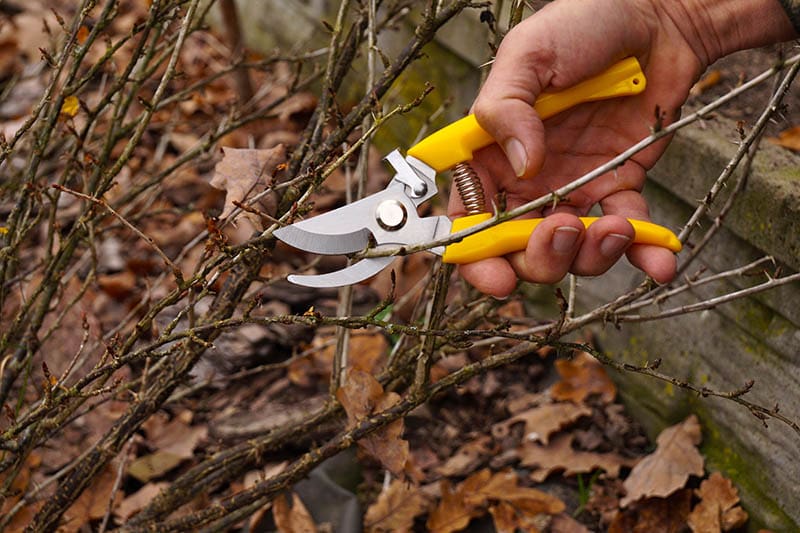
Losing branches can change the weight and shape of mature oaks significantly. Before you start trimming a mature oak, carefully plan out your session. Removing broken, diseased, or dead branches is important. It’s also important to ensure your tree’s canopy is getting the sunlight and airflow it needs. However, you don’t want to thin the canopy too much so the tree can continue to make food and stay healthy.
10. Consistency Helps with Shape
With young oak trees, yearly trimming can help them create shape and become healthier. Trimming adult trees can also change not only their shape but their weight. If you consistently prune your trees each winter you can help them grow in the shape you want while ensuring they stay healthy and strong for many years to come.
Conclusion
Keeping your oak trees properly pruned is an important job. Whether you are working with young trees or those that have matured, understanding the right steps to follow for this important task is safer for you and your oak trees. As with any DIY task you take on, safety should always be your first concern. If you implement safety protocols, you should be able to turn yearly tree pruning into a fun activity that gives you a reason to enjoy the outdoors and the fresh, cool air. If you have any questions regarding your oak trees, proper pruning, and their health, contacting your local arborist or extension office can help you receive the advice you need before proceeding.
You Might Also Be Interested In: Who Invented the Chainsaw?
See also:
- 4 Tips on When and How to Prune Burning Bush – You Need to Know!
- 5 Tips on When and How to Prune Dogwood Trees
Featured Image Credit: Maclane Parker, Shuttersotck
Contents

